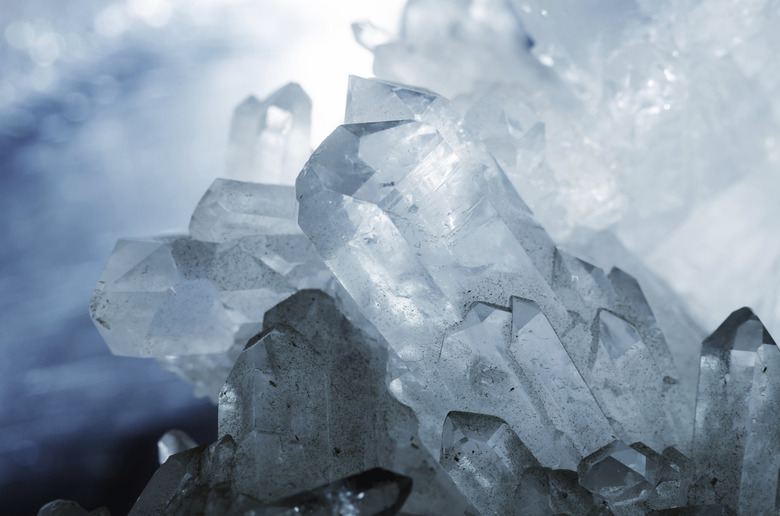What Is Drusy Quartz?
Drusy (or druzy) is a geological term applied to quartz that forms a layer of closely spaced, small crystals that line a surface or cavity of another kind of rock. Drusy quartz, silicon dioxide, is most commonly clear or whitish, and can resemble glittering sugar or snow crystals. It occurs within geodes and lines the walls of cavities called vugs that occur within hollows and veins of rocks.
Formation
Formation
Geodes, commonly called thundereggs, are hollow, spherical rocks. They are formed by an original sedimentary concretion that was gradually replaced by redeposited hard rock, with a dense form of quartz called chalcedony forming the exterior rind. The drusy quartz forms when water containing silicon dioxide seeps through cracks and fissures in the rind, redepositing crystalline quartz in the hollow interior. Druses in vugs are usually found in mines constructed for harvesting other types of minerals or gems. They are sometimes combined with other minerals, such as yellow barite found in the Rock Candy Mountain Mine in British Columbia.
Uses
Uses
Split-open geodes containing drusy quartz are often collected and displayed. The hard, exposed, cut rind is commonly polished rather than left rough. The purple form of quartz, called amethyst, also makes druses. Vugs lined with drusy quartz are frequently chiseled from the parent rock for collecting. Fine druses are also used for jewelry, usually in earrings, brooches or pendants where crystals are at less risk of detachment upon wear.
Cite This Article
MLA
White, Alexander. "What Is Drusy Quartz?" sciencing.com, https://www.sciencing.com/drusy-quartz-5031843/. 24 April 2017.
APA
White, Alexander. (2017, April 24). What Is Drusy Quartz?. sciencing.com. Retrieved from https://www.sciencing.com/drusy-quartz-5031843/
Chicago
White, Alexander. What Is Drusy Quartz? last modified March 24, 2022. https://www.sciencing.com/drusy-quartz-5031843/
